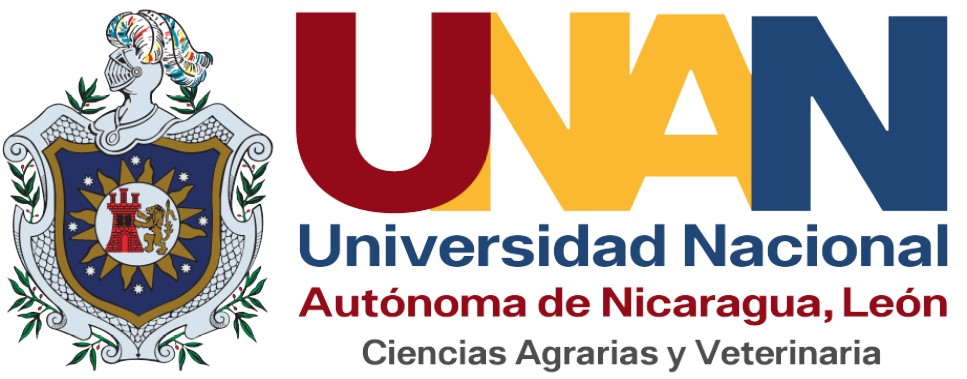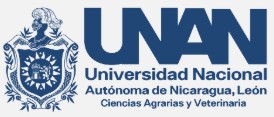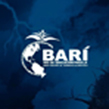Productive characterization of avocado (Persea americana Mill.) in the high mountain area Veracruz, Mexico
DOI:
https://doi.org/10.5377/ribcc.v6i12.9941Keywords:
Persea americana, fruit, culture diagnosisAbstract
Mexico is one of the leading countries in avocado production worldwide and the most planted variety in Mexico is Hass. The state of Michoacán is the main avocado producer with 80% out of the total, followed by other states such as Jalisco and state of Mexico. In Veracruz there is an area planted in the central part of the state that needs to be characterized. The objective of this study was to typify the avocado producing zone in the high mountain zone of Veracruz, Mexico. The avocado producing area in the high mountains region, Veracruz is made up of the municipalities of Alpatlahua, Calcahualco, Coscomatepex and Ixhuatlan del café. A survey was applied to producers using a semi-structured questionnaire with open and closed questions. The information analysis was carried out systematically with descriptive and multivariate analysis of components and correspondence, in addition to parametric and non-parametric analysis of the data for some variables. The results obtained showed groups of small producers, composed of 80% men. Most producers are literated, and they devoted themselves to activities other than avocado cropping. The avocado producer has a tacit knowledge of the crop management from the plantation stage to the tree production. Producers have experience in management of other crops because they have the purpose of obtaining additional income from other activities.
Downloads
Metrics
References
Cambero C. O. J., Johansen N. M., García M. O., Carvajal C. C. R., Isiordia A. N., Cantu S. M., 2009. Thrips fitófagos en huertas de aguacate cv. Hass en Nayarit, México. Brenesia, 71(72): 61-64.
Campos B., Calderón E., Gonzales J., Barcelo A., Sarmiento D., Gonzales M. J., Medina D., Barea A., Guirando E., Ramón B. J., 2015. El cultivo del aguacate. Instituto de investigación y formación agraria y pesquera. Consejería de agricultura, pesca y desarrollo rural. file:///C:/Users/roosy/Downloads/Curso%20el%20cultivo%20del%20aguacate_Resumenes%20ponencias%20(1).pdf.
Dane, 2016. Cultivo de aguacate Hass (Persea americana Mill; Persea nubigena var. Guatemalensis x Persea americana var. drymifolia), plagas y enfermedades durante la temporada de lluvias. Insusmos y factores asociados a la producción agropecuaria. 50. 1-102. https://www.dane.gov.co/files/investigaciones/agropecuario/sipsa/Bol_Insumos_ago_2016.pdf
Durlak W., Marcinek B., Szmagara M., Dudkiewicz M., Konopinska M. A., 2019. Effect of selected preparations of tardiva panicled hydrangea (Hydrangea paniculata Siebold) depending on the irrigation frequency. Acta Sci. Pol. Hortorum, 18(2): 39-51. https://doi.org/10.24326/asphc.2019.2.5
Frans, G. 2002. 80 herramientas para el desarrollo participativo: diagnóstico, planificación monitoreo, evaluación/Frans Geifus-San Jóse, C.R.: IICA. 217 P.
García F. J. A., Ramos G. M. del R., Mora G. J., 1999. Estructura de la semilla de aguacate y cuantificación de la grasa extraída por diferentes técnicas. Centro de investigación y asistencia en tecnología y diseño del estado de Jalisco. 124-128. https://www.chapingo.mx/revistas/revistas/articulos/doc/rchshV1104.pdf.
Garrido R. E., Noriega D., Gonzales M. R., 2013. Áreas potenciales para el cultivo del aguacate (Persea americana L.) cultivar Hass en el estado de Guerrero, México. INIFAP. Campo experimental de investigación forestal acuícola y pecuario. Reseachgate. file:///C:/Users/roosy/Downloads/Aguacatecont7.pdf
Gómez C. N., Villagra M. K., Solorzano Q. M., 2018. La labranza mecanizada y su impacto en la conservación del suelo (revisión de literatura). Tecnología en marcha. 31(1):170-180. https://doi.org/10.18845/tm.v31i1.3506
Gonzales S. C. E., 2018. Cultivo del aguacate (Persea americana Miller). Centro nacional de tecnología agropecuaria y forestal. Ministerio de agricultura y ganadería. 7-24. http://centa.gob.sv/docs/guias/frutales/Guia%20Centa_Aguacate%202019.
Guerra P. J., Ávila M. L. A., Ponce M. F., 2012. Caracterización del sistema producto aguacate en los reyes, Michoacán, 2º. Congreso internacional de desarrollo comunitario At. Pátzcuaro.
Gutiérrez C. M., Lara C. Ma. B. N., Guillén A. H., Chávez B. A. T., 2010. Agroecología de la franja aguacatera en Michoacán, México. Interciencia. 35(9): 647-653.
Hernández G. H., Ramírez G. M. E., Arévalo G. L., 2013. Histología del daño en fruto y ramas de aguacate "Hass" por escamas aramadas (Hemiptera: Diaspidiae). Revista Mexicana de ciencias agrícolas. 5 (4):739-751. file:///C:/Users/roosy/Downloads/ArticuloRuben.pdf. https://doi.org/10.29312/remexca.v4i5.1172
INEGI. 2020. https://www.inegi.org.mx/mapasitio/.
López G. G., Medina T. R., Guillem A. H., Ramírez G. L., Aguilar C. J., Valdivia R. G. M., 2012. Características fenotípicas de hojas y fruto en selecciones de aguacate criollo de clima subtropical en el estado de Nayarit. Unidad académica de agricultura, universidad autónoma de Nayarit, México. http://fuente.uan.edu.mx/publicaciones/04-10/6.pdf.
Loya R. J. G., García-H. J. L., Ellington J. J., y Thompson, D. V. 2003. Impacto de la asociación de cultivos en la densidad de insectos hemípteros entomófagos. Interciencia, 28(7), 415-420.http://ve.scielo.org/scielo.php?script=sci_arttext&pid=S0378-18442003000700010&lng=es&tlng=.
Lu Q., Zhang Y., Wang Y., Lee R., 2009. Identificación y caracterización de frutos de selecciones de aguacate criollo en el clima cálido de Nayarit, México. Journal of agriculturall and food chemistry. 57 (104):08-13
Márquez C. J., Yepes P. D., Sánchez L., Osorio J. A., 2014. Cambios fisicoquímicos del aguacate (Persea americana Mill. cv. "Hass") en poscosecha para dos municipios de Antioquia. (19):1. 32-37. file:///C:/Users/roosy/Downloads/DialnetCambiosFisicoquimicosDelAguacatePerseaAmericanaMil-4994548%20(3).pdf https://doi.org/10.21897/rta.v19i1.723
Méndez P. M. C., Humanez M. U. N., Pérez R. J. A., Bertel O. C. A., 2015. Estrategia de distribución de la cadena productiva del aguacate en los montes de maría. Perspectiva, socieconómica, 2. 105-118. https://doi.org/10.21892/24627593.228
Montero C. M., Cerdas A. M. M, Diaz C. E., 2006. Manual de manejo pre y poscosecha de aguacate. Ministerio de agricultura y ganadería centro de investigación agronómica. Universidad de costa rica. Consejo nacional de producción. http://www.mag.go.cr/bibioteca_virtual_ciencia/aguacate-2006.pdf.
Montiel A. G., Krishnamurthy L., Vázquez A. A. y Uribe G. M., 2008. Opciones agroforestales para productores de aguacate. Terra Latinoamericana. 26 (1): 85-90.
Palacios S. M. B., 2010. El aguacate y sus diferentes aplicaciones en 25 recetas. Universidad de cuenca facultad de ciencias de la hospitalidad carrera de gastronomía. 4-181. https://dspace.ucuenca.edu.ec/bitstream/123456789/1626/1/tgas14.pdf.
Rebolledo M. L., Megchún G. J. V., Rebolledo M. A., Orozco C. D. M., 2019. Asociación de frutales de limón persa (Citrus latifolia) y palma de coco (Cocos nucifera L.) con el aporte de materia seca por cultivos anuales. Revista Iberoamericana de Bioeconomia y Cambio Climático. 5 (10): 2410-7980. https://doi.org/10.5377/ribcc.v5i10.8968
Reyes J. C., Rubi A. M., Aguilar M. J. J., 2013. Manejo orgánico en el cultivo de aguacate. Fundación Salvador Sánchez Colin. http://www.avocadosource.com/Journals/CICTAMEX/CICTAMEX_1995/Ecol_1_95.pdf.
Rodríguez C. J., Escobedo R. A., Lugo M. O. Y., 2017. Inocuidad del aguacate. Unidad de servicios analíticos y meteorológicos. Centro de investigación y asistencia en tecnología y diseños del estado de Jalisco A. C. 165-186. https://ciatej.repositorioinstitucional.mx/jspui/bitstream/1023/634/1/cap%20IInocuidad%20Aguacate.pdf.
Rodríguez Z. E., 1980. El cultivo de frutales en obras de conservación de suelos. Ordenación integrada de cuencas hidrográficas. FAO. Tegucigalpan, Honduras. 61 p.
Rubí A. M., Franco M. A. L., Rebollar R. S., Bobadilla S. E. E., Martínez de la C. I., Siles H. Y., 2013. Situación actual del cultivo de aguacate (Persea americana Mill) en el estado de México, México. Tropical and subtropical agroecosystems. 16:93-101.
Saldívar I. P., 2017. Producción de cultivos Perennifolios, cultivo aguacate (Persea americana Miller). Campus Universitario El Cerrillo. Universidad Autónoma del Estado de México, Facultad de Ciencias Agrícolas. http://ri.uaemex.mx/bitstream/handle/20.500.11799/66699/Cultivo_aguacate_Perennifolios.pdf?sequence=3&isAllowed=y
Sánchez S. C., Mijares O. P., López L. L., Barrientos P. A. F. 2013. Historia del aguacate en México. Departamento de fitotecnia, universidad autónoma de Chapingo. 171-187. http://www.avocadosource.com/journals/cictamex/cictamex_1998-2001/CICTAMEX_1998-2001_PG_171-187.pdf.
Sangerman J. D. Ma., Larqué S. B. S., Omaña S. J. M., Shwenstesius de R. R., Navarro B. A. 2014.Tipología del productor de aguacate en el estado de México. Revista Mexicana Agrícolas. 5(6):1081-1095. https://doi.org/10.29312/remexca.v5i6.892
Serna S., Montoya B., Osorio W., 2012.Monitoreo del pH y fósforo soluble en la rizosfera de árboles de aguacate en el norte y oriente Antioqueño. Suelos Ecuatorianos. 42 (2): 186-190.
Tapia V. L. M., Larios G. A., Hernández P. A., Guillén A. H., 2014. Nutrición orgánica del aguacate cv. Hass y efecto nutrimental y agronómico. Revista Mexicana de Ciencias Agrícolas. 5(3): 463-472. https://doi.org/10.29312/remexca.v5i3.950
Escobedo, N., & Oliver, G. (2017). The lymphatic vasculature: its role in adipose metabolism and obesity. Cell metabolism, 26(4), 598-609.
Downloads
Published
How to Cite
License
Copyright (c) 2020 Ibero-american JournalL of Bioeconomy and Climate Change e-ISSN 2410-7980

This work is licensed under a Creative Commons Attribution-NonCommercial-ShareAlike 4.0 International License.
Copyright © 2025 Rev. iberoam. bioecon. climate change. National Autonomous University of Nicaragua León (UNAN-León), Knowledge Area of Agrarian and Veterinary Sciences / Specific Area of Agroecology and Agribusiness / Center for Research in Agrarian Sciencies. Academic Directorate. Research Department. Publication and scientific events Unit.












 EDITORIAL
EDITORIAL e-ISSN
e-ISSN


 COPYRIGHT
COPYRIGHT This work is licensed under a Licencia Internacional
This work is licensed under a Licencia Internacional 












